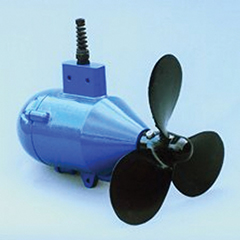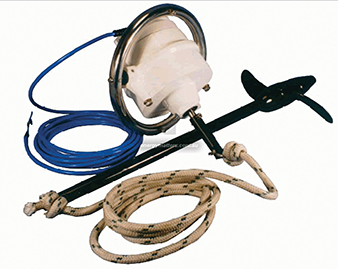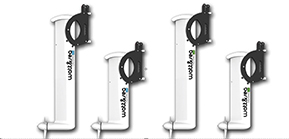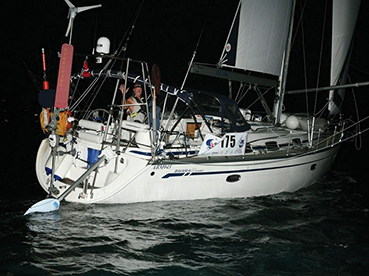Let your boat’s speed through the water charge your battery bank (published November 2015)
Water powered the beginning of the Industrial Revolution when inventors and entrepreneurs discovered that a turning water wheel could be used to drive the machines that can mill lumber, weave cloth and turn lathes. Water power could be transformed into economic power by harnessing the inherent energy in a flowing stream.
So, it is not much of a leap for the tinkerers and inventors in the marine world to figure out that the flow of water past the moving hull of a sailboat contains the same energy as the water flowing past a water wheel. Plus, that energy is there whenever the boat is underway so all they had to do was figure how to use its power to generate electricity.

Water generators are not new. American Hamilton Ferris has been building and selling water generators—the Water Power 200—since 1975 and this year (2015) is in the process of redesigning the unit to include the latest generating technology. The concept then and today is to devise a generator that uses a propeller that is made to spin by the flow of the water to turn a small generator. The current created by the generator then runs through a regulator to the battery bank. The speed of the boat and thus the speed of the water flowing past it determines the spinning speed of the prop and the amount of energy created by the generator. Speed equals energy. Contact Hamilton Ferris for more information about the next generation models soon to be on the market.
The Ferris Water Power 200 can be converted into a wind generator with long blades and a tail that can be hung over the boat’s fore triangle where it will generate electricity while the boat is at anchor. Several other water generator manufacturers have also adopted this dual use philosophy.
The Duo-Gen, from England, is a dual purpose generator that can be deployed in both wind and water modes. Now in its third generation, the generator advertises that it can produce six amps in 15 knots of wind or eight amps in the water with a boat speed of six knots. The unit mounts on the stern and has a crane for the wind mode and a swivel for water mode. It is built of enhanced aluminum castings and has a carbon fiber drive shaft. The Duo-Gens have been used on world cruises for years and have proven reliable. The all up cost of a unit and installation will run about $4,000.
Duo-Gen also produces the water only Sail-Gen that mounts on the transom and will deliver a whopping 10 amps at six knots. The impeller is held firmly under the water by an articulating dive plane and when it is time to retrieve it, you simply change the plane’s angle and the unit pops out of the water. Simple, powerful and well made, the Sail-Gen will definitely keep the batteries topped up. For boats on passage, a speed of five knots will generate 150 amp-hours per day while a speed of seven knots will put out up to 400 amp-hours. The Sail-Gen with the regulator will run about $3,000.

Ampair is another English company that has been building wind and water generators for cruisers for nearly 40 years. Their dual mode unit is called the Aquair 100 and is similar to the Ferris unit, being comprised of a small generator that can be adapted with a tail and blades in wind mode or connected to a gimbaled stern mount and a towed propeller in water mode. The generator can provide up to 100 watts of output at the top end, which translates to about 200 amp hours daily on passage. The Aquair with a regulator and the wind conversion kit will run about $1,800.
The most recent entry in the water generator market comes from France. Developed for cruisers and racers, the Watt & Sea water generators are not dual mode. Shaped like a very streamlined sail drive, the units fit on stern brackets and can be lowered and raised easily on deck. Watt & Sea offers 300 and 600 watt models; the 300 watt models put out eight amps at seven knots while the 600 produces amps at six knots. Eight amps become 192 amphours daily. The units are not inexpensive with prices for the 300 running about $3,500 and the 600 at about $4,500.

Watt & Sea also builds ultra light, all carbon water generators for racers that are designed to perform in a wide range of boats speeds from two to 15 knots and more. The output from these units is 150 watts or about 12 amps.















